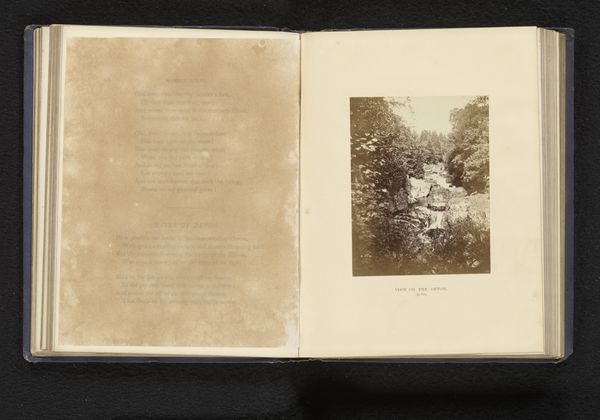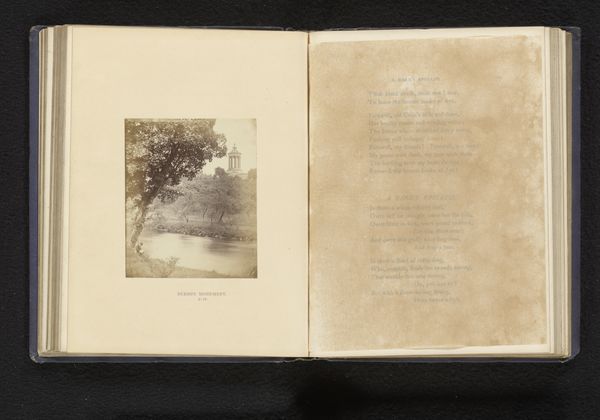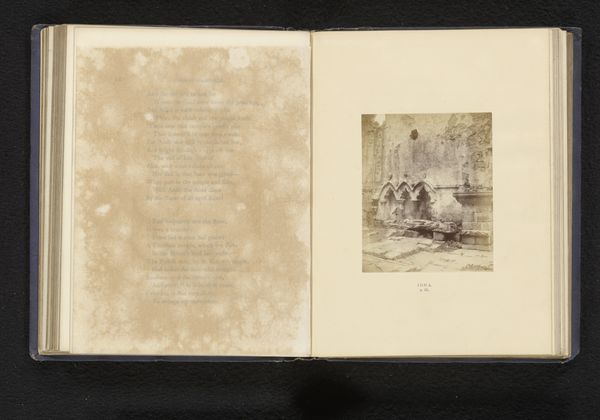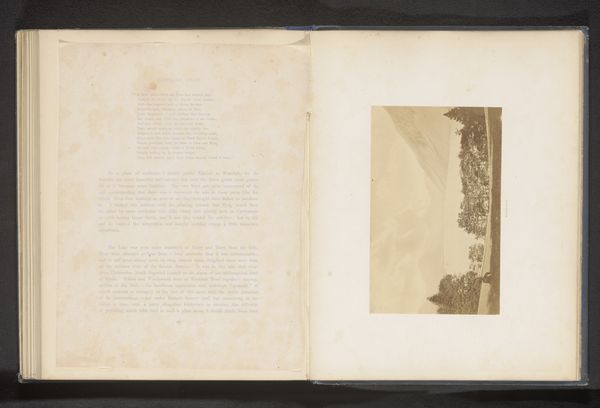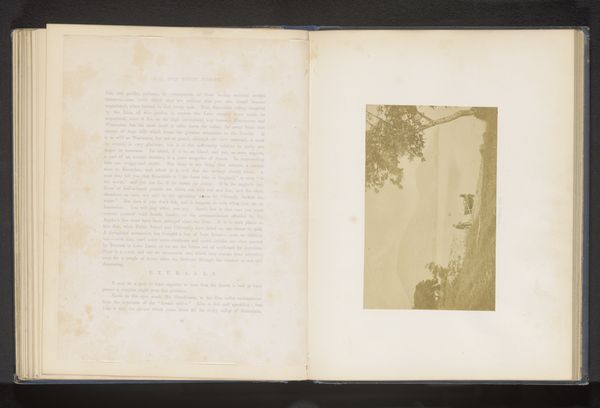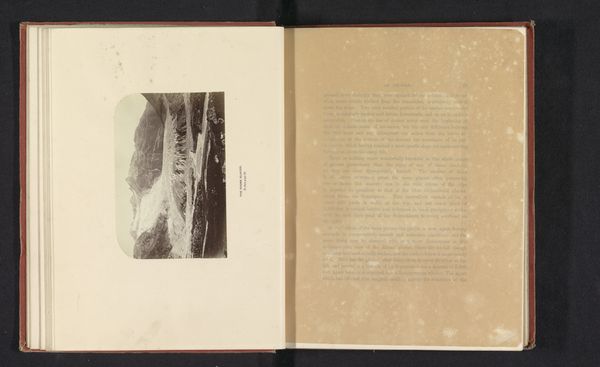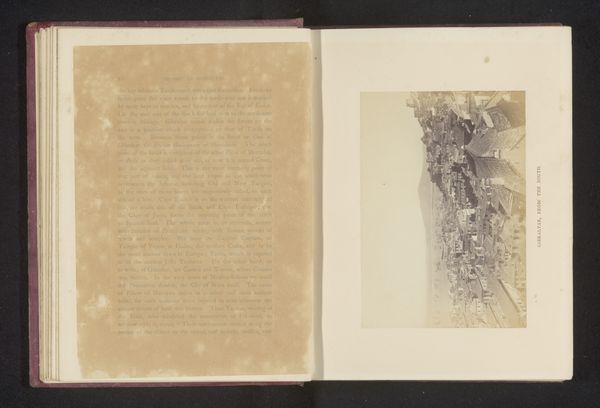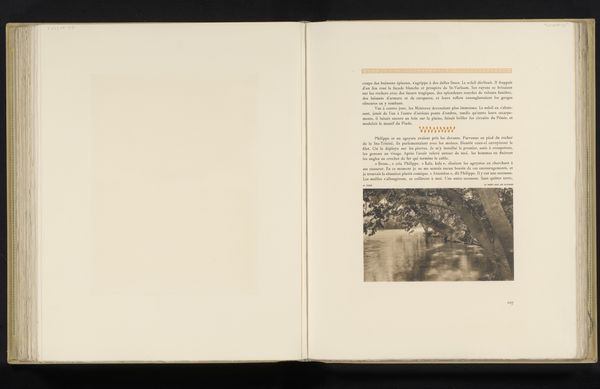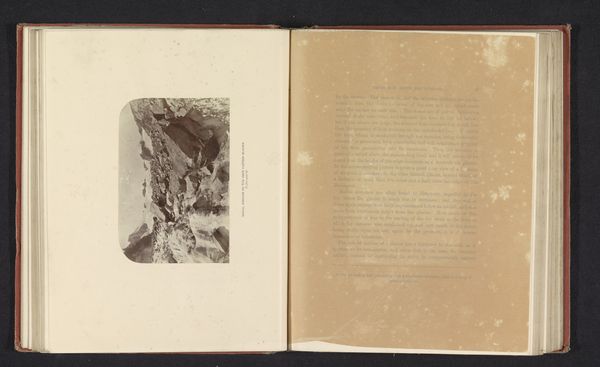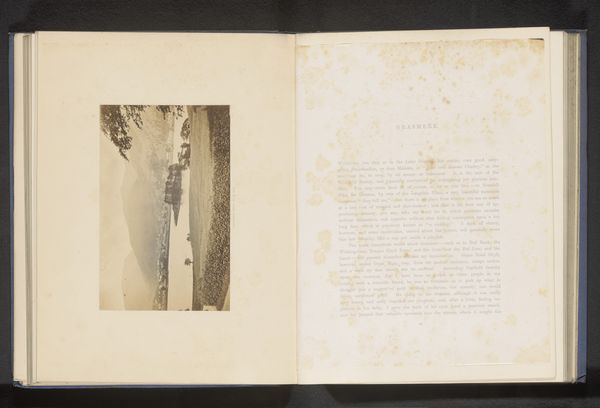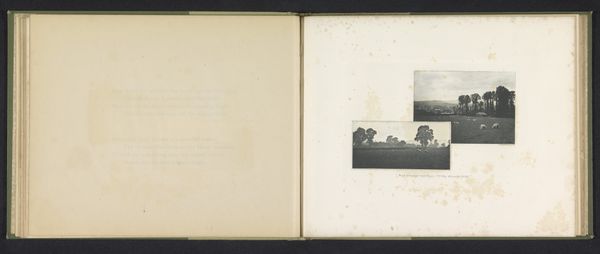
Dimensions: height 95 mm, width 78 mm
Copyright: Rijks Museum: Open Domain
Editor: This is Stephen Thompson's "Gezicht op de waterval Corra Linn," a gelatin-silver print made before 1868. The photograph, with its melancholic light, is presented within the pages of a book alongside some blurry handwriting. It makes me think of early tourism and our desire to capture nature’s beauty. What do you see in this piece, especially regarding its materiality? Curator: Well, considering Thompson's practice, I focus on the technical means of production. Look at the materiality of the gelatin-silver print itself. What were the processes involved in its creation, from the light-sensitive chemicals to the labor needed to produce the print and the book? This piece reflects the burgeoning photographic industry and its accessibility to a wider public in that era. Editor: So you are pointing to the material realities of photographic production impacting artmaking itself. How does the book format play into that? Curator: Precisely. How did its presence in this printed format facilitate its circulation? It moved images from exclusive collections into the hands of everyday consumers. This democratized access, but also commodified nature through reproducible images. The placement opposite handwriting or some kind of textual representation also offers an implicit commentary. Why couple it? Editor: I guess, it's an early form of mass media, then? Linking poetry and picturesque imagery of sites was common, right? It brings both closer to an audience. Curator: Exactly. Consider the labor behind not only the photo but also the book production. Each element involved distinct material practices. Do you think the combination elevates it beyond being a mere "souvenir?" Editor: It makes me reconsider the work's purpose. The process emphasizes both artistry and accessibility. Curator: Right, analyzing it this way acknowledges both the artistic intent and the wider social context of its creation and consumption. The value isn't solely in the image, but in how it was manufactured, distributed, and consumed.
Comments
No comments
Be the first to comment and join the conversation on the ultimate creative platform.
